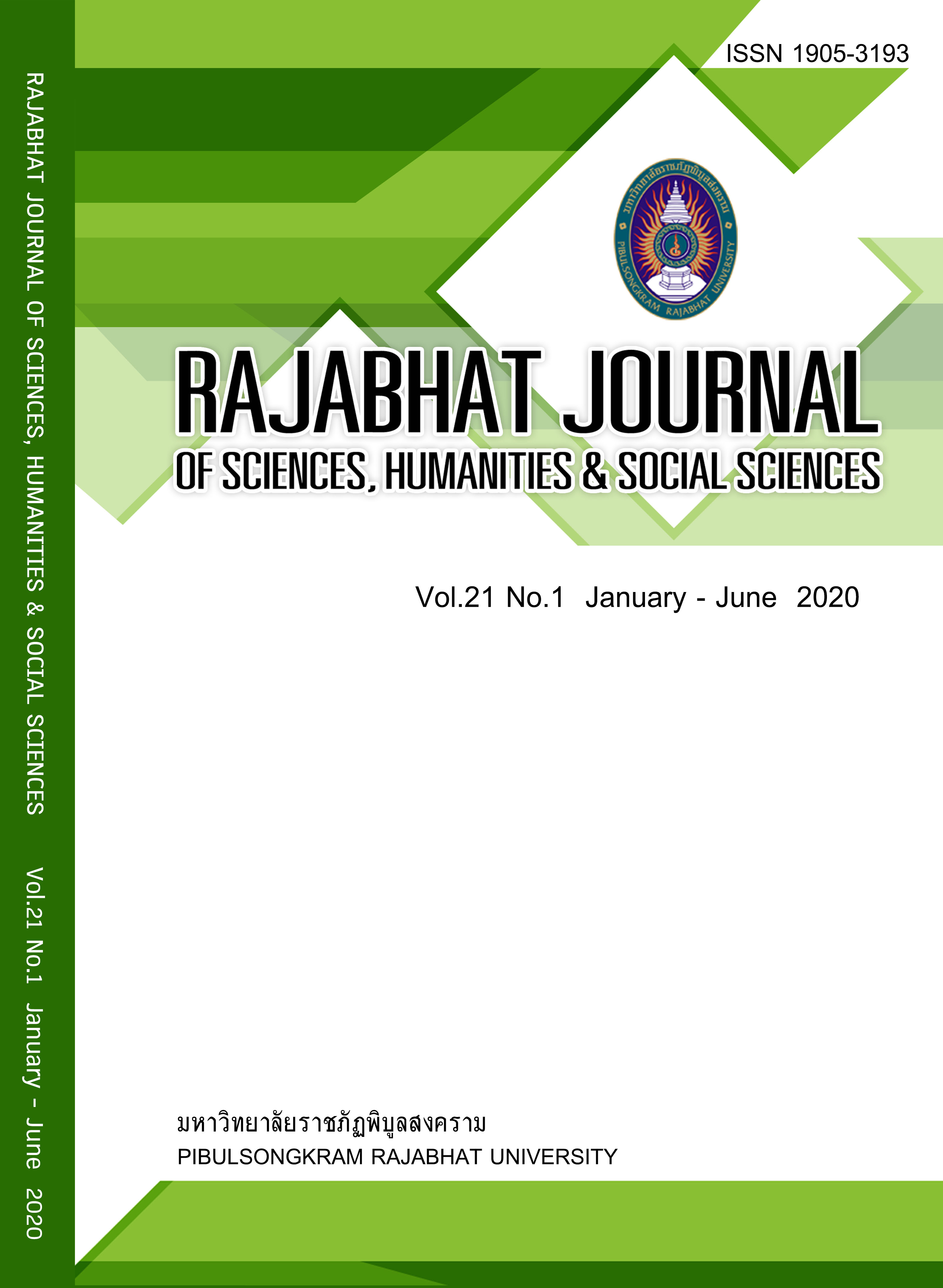ETHNIC FEMALE HUMAN-TRAFFICKING: THE CASE OF HMONG WOMAN IN LAOS
Keywords:
Hmong culture, Ethnicity, Human trafficking, Gender-based violenceAbstract
Migration in Laos has been influenced by economic factor, government policies and social factor including gender-based violence that has been defined as a factor that leads women to unsafe migration and can possibly become victims of human trafficking. This paper would like to make an in-depth analysis on this issue in order to comprehend the details of gender-based violence. Relating to human trafficking, the ethnographic research was conducted through in-depth life history interview with one key informant. Focus-group interview and observation method were made to collect data in the field, and later triangular method has been applied in order to verify the data. The research study was conducted in Vientiane, Laos PDR. Through the theory of structuration, the analysis was made to analyze the experiences of the key informant. It is found that patriarchal culture, that shapes women and positions the status of women as secondary importance, had rather create limitations than opportunities to women. Moreover, it reproduces the cultural violence and structural violence that have gender-based violence as the main factor and can lead women to risks, or to fall prey to human trafficking, or to be at risks of unsafe migration.
References
Chang, Ace. (2015). Social Factors Related to Domestic Violence among Hmong Adults. Retrieved from Sophia,
the St. Catherine University repository website: https:// Sophia.stkate.edu/msw_papers/248
Cerhan, J.U. (1999). The Hmong in the United States: An overview for mental health professionals. Journal of Counseling and Development, 69, 88 – 92.
Centre Against International Human Trafficking, Office of Attorney General. (n.d.) Case law database: Sarawan and Kongsamrej, Available: https://sherloc.unodc.org/cld/case-law-doc/ traffickingpersonscrimetype/tha/2012/sarawan_and_kongsamrej.html?lng=en&tmpl=sherloc [17 January 2020]
Cha, Y. P. (2010) An introduction to Hmong culture, Jefferson, NC: McFarland & Company Inc.
Ethnic minorities and indigenous people. (2019) Available: https://laos.opendevelopmentmekong.net/topics/ ethnic-minorities-and-indigenous-people/ [19 January 2020]
Farzaneh, M., & Movahed, M. (2015) Disadvantage to pre-school children learning a foreign language, Theory and Practice in Language Studies, vol. 5, no. 4, pp. 858-864.
Foo, Lora J. (2002). Hmong women in the US: Changing a patriarchal culture. In Lora J. Foo (Ed.) Asian
American Women: Issues, concerns and responsive human and civil rights advocacy (pp. 4 – 161). New York: Ford Foundation.
Gardner, M., & Steinberg, L. (2005) Peer influence on risk taking, risk preference, and risky decision making in adolescence and adulthood: An experimental study, Development Psychology, vol. 41, no. 4, pp. 625-635.
Gerin, R. (2018). Lao Woman’s Ordeal Highlights Growing Trafficking Problem as Workers Seek Better Jobs in Thailand Available: https://www.rfa.org/english/news/laos/lao-womans-ordeal-highlights-growing-trafficking-problem-11142018162254.html [20 February 2020]
Giddens, A. & Pierson, C. (1998.) Conversations with Anthony Giddens Making Sense of Modernity. California: Stanford University Press.
Hmong Statistics Population: Estimated. (2017) Available: https://unpo.org/members/7891 [15 January 2020]
Hu, R. (2016) The age factor in second language learning, Theory and Practice in Language Studies, vol. 6, no. 11, pp. 2164-2168.
International Labour Organisation (ILO). (2008) Meeting the challenge: Proven practices for human trafficking prevention in the Greater Mekong Sub-Region, Available: https://www.ilo.org/wcmsp5/groups/public/ ---asia/---ro-bangkok/documents/publication/wcms_099806.pdf [20 January 2020]
Jun, Y. (2017). A UN Women booklet helps smooth the journey for Lao migrant workers in Thailand Available: https://asiapacific.unwomen.org/en/news-and-events/stories/2017/12/journey-for-lao-migrant-workers-in-thailand [20 February 2020]
Lao Statistics Bureau. (2015) Results of population and housing census 2015, Available: https://lao.unfpa.org/sites/default/files/pub-pdf/PHC-ENG-FNAL-WEB_0.pdf [20 January 2020]
Lisuk, M. N. (2015) What is a good girl? The evolution of feminine identity in the American Hmong community, Master’s thesis, California State University.
Macnamara, J. (1973) Nurseries, streets and classrooms: Some comparisons and deductions, The Modern Language Journal, vol. 57, no. 5-6, pp. 250-254.
Moua, T. (2003) The Hmong culture: Kinship, marriage and family systems, Master’s thesis, University of Wisconsin-Stout.
Rawls, A. W., & David, G. (2006) Accountably other: Trust, reciprocity and exclusion in a context of situated practice, Human Studies, vol. 28, pp. 469-497.
Reinharz, S. (1992). Feminist Methods in Social Research. New York: Oxford University Press.
Palmgren, Pei. (2011). Navigating a Hostile Terrain: Refugees and Human Rights in Southeast Asia.
Sociology Compass, 5(5), pp. 323-325.
Schlemmer, G. (2017) Ethnic belonging in Laos: A politico- historical perspective, Available: https://hal.archives-ouvertes.fr/hal-01853834/document [20 January 2020]
Spivak, G.C. (1993). Can the Subaltern Speak? In P. Williams & L. Chrisman (Eds.), Colonial Discourse and Post-Colonial Theory: A Reader (pp. 66-111), Hertfordshire: Harvester Wheatsheaf.
Soukhathammavong, S. (2013). The Impacts of Migrant Workers on Their Communities: A Case Study
Of Savannakhet Province, Lao PDR, the 6th Thai and Southeast Asian Studies Graduate Symposium Forum on New Researches: Weaving Diversities in Southeast Asia; Socio- Cultural Perspectives, the Southeast Asian Studies Program, Graduate School and Thai Studies Centre, Faculty of Arts Chulalongkorn University.
Sudprasert, K. (2008) Changing gender relation of Hmong women hemp traders: from village to market, Chiang Mai: Graduate School Chiang Mai University.
Sweeney, W. (2015). Victims of Poverty and Gender Roles: The Marriage Practices, Gender-based Violence, and Trafficking That Hmong Women Face in Their Daily Lives, Independent Study Project (ISP) Collection, 2098.
United States Department of State. (2015) Trafficking in persons report - Thailand, Available: https://www.refworld.org/docid/55b73b9131.html [20 January 2020]
Downloads
Published
How to Cite
Issue
Section
License
Each article is copyrighted © by its author(s) and is published under license from the author(s).










